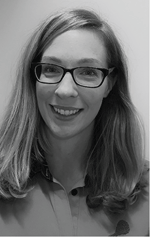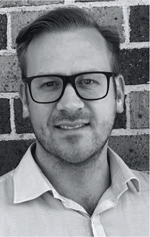The digital worker: how technology is enhancing safety and productivity in the field
Kate Taylor A C and Trevor Walker BA Broadspectrum Australia, Level 4, 52 Merivale Street, South Brisbane, Qld 4101, Australia.
B ICD Asia Pacific, Level 2, Suite 2.04, 21 Solent Circuit, Norwest Business Park, Baulkham Hills, NSW 2153, Australia.
C Corresponding author. Email: kate.taylor@broadspectrum.com
The APPEA Journal 60(2) 540-543 https://doi.org/10.1071/AJ19174
Accepted: 15 April 2020 Published: 15 May 2020
Abstract
The Australian workplace is currently in a state of evolution, from the physical space workers occupy to a way of working and interacting in which we are constantly connected. Technology is becoming cost-effective, making it more affordable at all workforce levels; businesses are investing in enterprise-grade solutions that are transforming both daily activities and long-term asset management strategies. To continue to drive the safety, productivity and cost improvements that our globally competitive market demands, we need to constantly assess technology solutions from outside the industry and adapt them to enhance our service delivery within the oil and gas industry. One such opportunity is the development and use of smartwatches within major hazard facilities. Through in-field trials, work crews are equipped with smartwatches that monitor health and well-being, alerting the worker if their risk of injury becomes elevated. These wearables also provide employees with efficient and effective accounting of personnel with their location in the case of emergency and provide opportunities for improved communication and productivity outcomes. Billions of dollars have been spent developing Australia’s oil and gas infrastructure. Ongoing operations and maintenance of these assets (and possible future expansions) remain labour intensive. With Australia’s comparatively high labour costs and the remoteness of both offshore and onshore resources, we cannot afford to hold back investment in our human assets, to gain deeper insights and optimise health and performance, as we have done in the case of our operating assets and equipment.
Keywords: contingent labour, dehydration, emergency response, fatigue, field, hazard facility, hazardous area, health, heart rate, heat stress, injury prevention, innovation, smartwatch, technology, volume of oxygen, wearable, well-being, wellness.

As General Manager for the Broadspectrum Centre of Excellence for Natural Resources, Kate Taylor develops opportunities with a focus on improving safety outcomes, data insights and reducing total cost of ownership using latest innovation and technology. Kate is currently delivering projects focusing on data analytics to drive asset optimisation and performance (through Internet of Things technology) and challenging current industry best practice using technology, including the use of smartwatches, virtual reality and mechanical exoskeletons in reducing injury risk and severity. Kate has held a variety of technical, strategic and development roles since joining Broadspectrum in 2012, most recently holding an operational leadership role in the Queensland coal seam gas industry. Kate is experienced across the water, mining and oil/gas industries and brings a unique viewpoint on cross-sector synergies and best practice. The Centre of Excellence for Natural Resources is a global network with specialist capability in Australia’s Resources and Industrial sectors in asset management, shutdown effectiveness, EPC-sustaining capital projects and geospatial engineering. Kate has a BSc (Honours) Environmental Science and an MSc Hydrogeology |

Trevor Walker is the General Manager for ICD Asia Pacific (ICD), a wholly owned subsidiary of Broadspectrum celebrating 50 years of operation. As the leader of ICD, Trevor is responsible for the effective delivery of multidisciplinary engineering consulting and design services to the oil and gas, heavy industrials, mining and utilities sectors. Before taking on the role of General Manager, Trevor started ICD’s Advanced Engineering Group, a division specialising in solving unique problems for which there is no prior solution. In partnering with universities and research institutions, ICD’s Advanced Engineering Group has successfully delivered several research projects. These include the 5-year AU$27M ventilation air methane (VAM) safety project with the University of Newcastle and current work being undertaken on the in situ remediation of per- and polyfluoroalkyl substances (PFAS) with the University of Sydney under an Australian Research Council grant. In addition to 15 years experience as a process engineer in the oil and gas and petrochemical industries, Trevor has combined his skills in computer science with engineering to develop novel radiative heat transfer simulations using state-of-the-art ray tracing techniques. Trevor has a Doctor of Philosophy Chemical Engineering, Bachelor of Chemical Engineering (Hons) and Bachelor of Science (Computer) |
References
Australian Bureau of Statistics (2019). Characteristics of employment, Australia, August 2019. Available at https://www.abs.gov.au/ausstats/abs@.nsf/mf/6333.0 [verified 17 April 2020].Boysen, P. G., Daste, L., and Northern, T. (2016). Multigenerational challenges and the future of graduate medical education. The Ochsner Journal 16, 101–107.
Breslin, F. C., and Smith, P. M. (2013). Risk factors for nonfatal work injury for young workers: a review of two relevant literatures. In ‘Health and Safety of Young Workers: Proceedings of a U.S. and Canadian Series of Symposia’. (Eds C. W. Runyan, J. Lewko, K. Rauscher, D. Castillo, and S. Brandspigel.), pp. 80–104. (U.S. Department of Health and Human Services, Centers for Disease Control and Prevention, National Institute for Occupational Safety and Health.)
CSIRO (2017). A roadmap for unlocking future growth opportunities in Australia.
National Heavy Vehicle Regulator (NHVR) (2019). Fatigue monitoring trial. Available at https://www.nhvr.gov.au/safety-accreditation-compliance/fatigue-management/fatigue-monitoring-trial [verified 17 April 2020].
Prensky, M. (2001). Digital natives, digital immigrants. On the Horizon 9, 1–6.
Robert Half (2019). The rise of the gig economy: one third of global workforce expected to be contractors by 2023. [Press release] Available at https://www.roberthalf.com.au/sites/roberthalf.com.au/files/press-release/AU_Robert%20Half%20Press%20Release_gig%20economy%20benefits.pdf [verified 17 April 2020].
SafeWork NSW (2018). At risk workers’ strategy 2018–22. Available at https://www.safework.nsw.gov.au/resource-library/at-risk-workers-strategy-2018-22 [verified 17 April 2020].
Sinha, S. (2019). Counterpoint technology market research – global smartwatch shipments grew 48%YoY in Q1 2019 with one in three being an Apple watch. [Press release] Available at https://www.counterpointresearch.com/global-smartwatch-shipments-grew-48yoy-q1-2019-one-three-apple-watch/ [verified 17 April 2020].
Taliangis, P. (2018). Digital transformation of the oil, gas and energy value chain. The APPEA Journal 58, 488–492.
| Digital transformation of the oil, gas and energy value chain.Crossref | GoogleScholarGoogle Scholar |
Transport Accident Commission (TAC) (2019). Fatigue statistics. Available at http://www.tac.vic.gov.au/road-safety/statistics/summaries/fatigue-statistics [verified 17 April 2020].
Yanar, B., Lay, M., and Smith, P. M. (2019). The interplay between supervisor safety support and occupational health and safety vulnerability on work injury. Safety and Health at Work 10, 172–179.
| The interplay between supervisor safety support and occupational health and safety vulnerability on work injury.Crossref | GoogleScholarGoogle Scholar |


